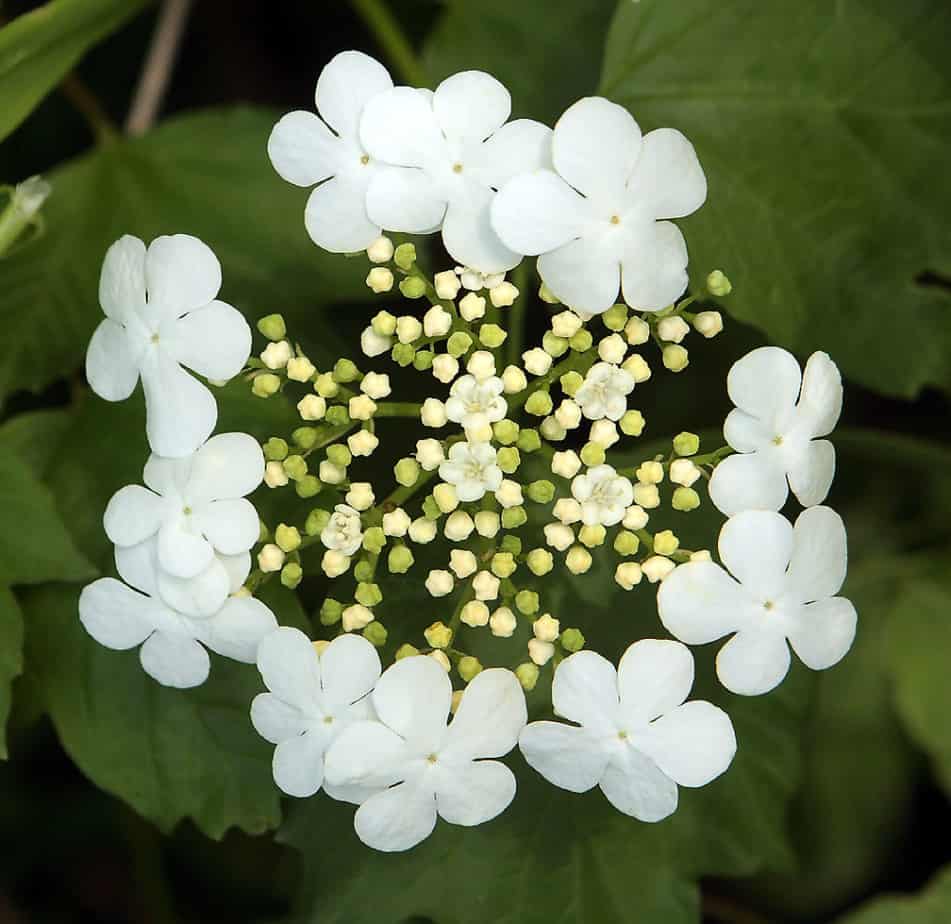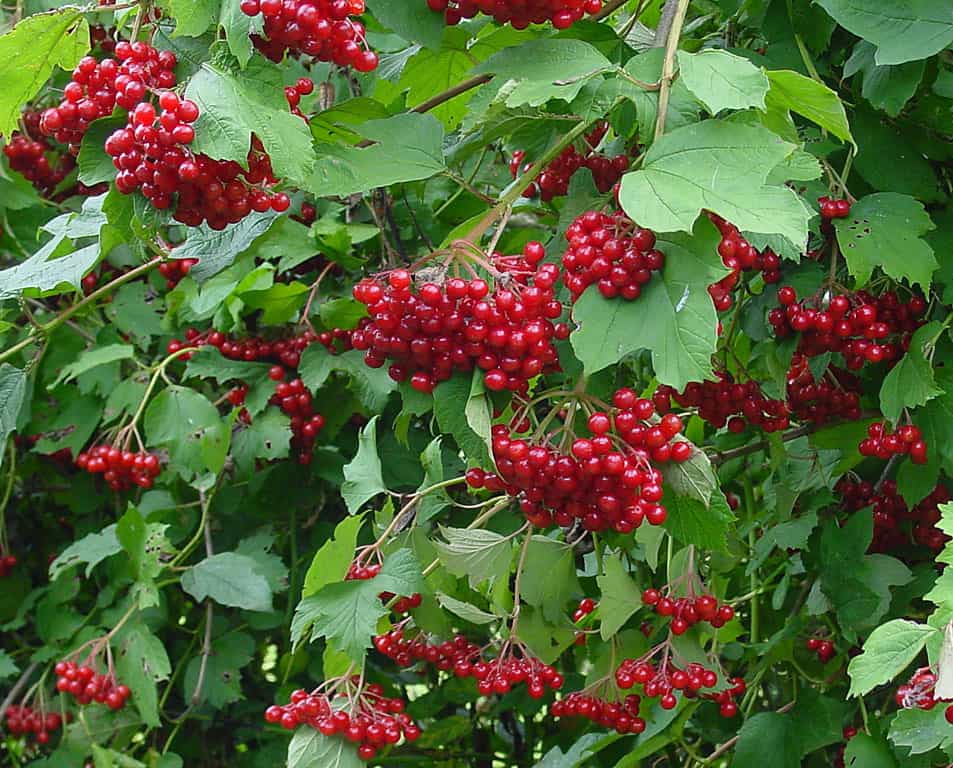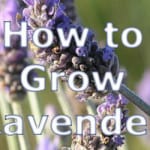Last updated on January 24th, 2022
Our site is reader supported, this means we may earn a small commission from Amazon and other affiliates when you buy through links on our site.
Viburnum opulus – Snowball Shrub
This stunning shrub is also known as a ‘Snowball Bush’ due to the elegant, light green and snowball-shaped flowers that appear around April to May, which then fade to an eye-catching white colour as they mature. The flowers are also loved by florists because they work well in bouquets and last when used in flower displays. The snowball-shaped flowers (that are sometimes fragrant) then fade and finish before bright red fruits are produced upon the long flower stalks.
Also known as a ‘Guelder Rose’ and ‘Crampbark’ this deciduous shrub produces green lobed leaves, similar to that of maple trees, which also turn to vibrant red/orange shades in autumn before dropping for the winter.
Viburnum opulus will grow to heights of approximately 4-5 metres, has a spread of 2-3 metres and is very hardy, down to -15c.

Viburnum opulus snowball flowers – source: wikipedia.org
Where to plant a Viburnum opulus
This hardy shrub can be planted in most positions and will grow well in any damp but well-drained soil in full sun, partial shade and even shade making it ideal as a woodland plant. Native to Britain it attracts wildlife and can be used for an informal hedge or in shrub borders to provide colour.
It is important to be aware that the fruit can cause a mild stomach upset if ingested.
Cultivating Viburnum opulus
Propagating is usually most successful when you are taking semi-hardwood cuttings or hardwood cuttings but the seeds can also be sown.
Taking a semi-hardwood cutting
Semi-hardwood cuttings are taken around the late summer to early autumn. Simply take a healthy, strong cutting around 6-8 inches in length from the current season’s growth. Remove any leaves and cut the top of the cutting, just above a bud and cut just below the lowest bud. Make sure the cut are clean cuts, add a rooting hormone to the bottom of the cutting and place them in a suitable pot. The compost should be a mix of seed compost and sharp sand (50/50). Place in a greenhouse or cold frame, the cutting should be ready to transplant into small pots in spring.
Hardwood cuttings are taken in the same way but in winter, and they may take longer to root before they can be transplanted.
Pruning Viburnum opulus
Viburnum can be left unpruned, however, as they mature old branches can become woody and produce fewer flowers. We recommend not pruning newly planted shrubs for the first few years but as they get older and mature it is recommended that you remove 1 out of every 5 branches down to the base to allow new shoots to grow. By doing this you will be rewarded with more flowers. If you have an old plant that has been left unpruned for many years then it can be pruned to near ground level to rejuvenate them. Always prune after flowering and remember if you prune you will probably not get any fruit that year.

Viburnum opulus berries – source: wikipedia.org
Viburnum opulus pest and diseases
Viburnums can suffer from leaf spot and this is a fungus where black spots appear on the foliage. Remove any affected foliage early on and spray with a fungicide. One of the other common problems is aphids and these should be sprayed with a pesticide at the first sign.
One pest that does affect them, sometimes causing significant damage to the leaves by leaving lots of holes in the leaves, similar to that of caterpillar damage, is the ‘Viburnum Beetle’. This damage is usually caused by newly hatching larvae in spring so search leaves in spring for any sign of damage and if found spray with an insecticide. The adult beetles also eat the leaves but killing the larvae in spring is usually most effective as you break the breeding cycle.



